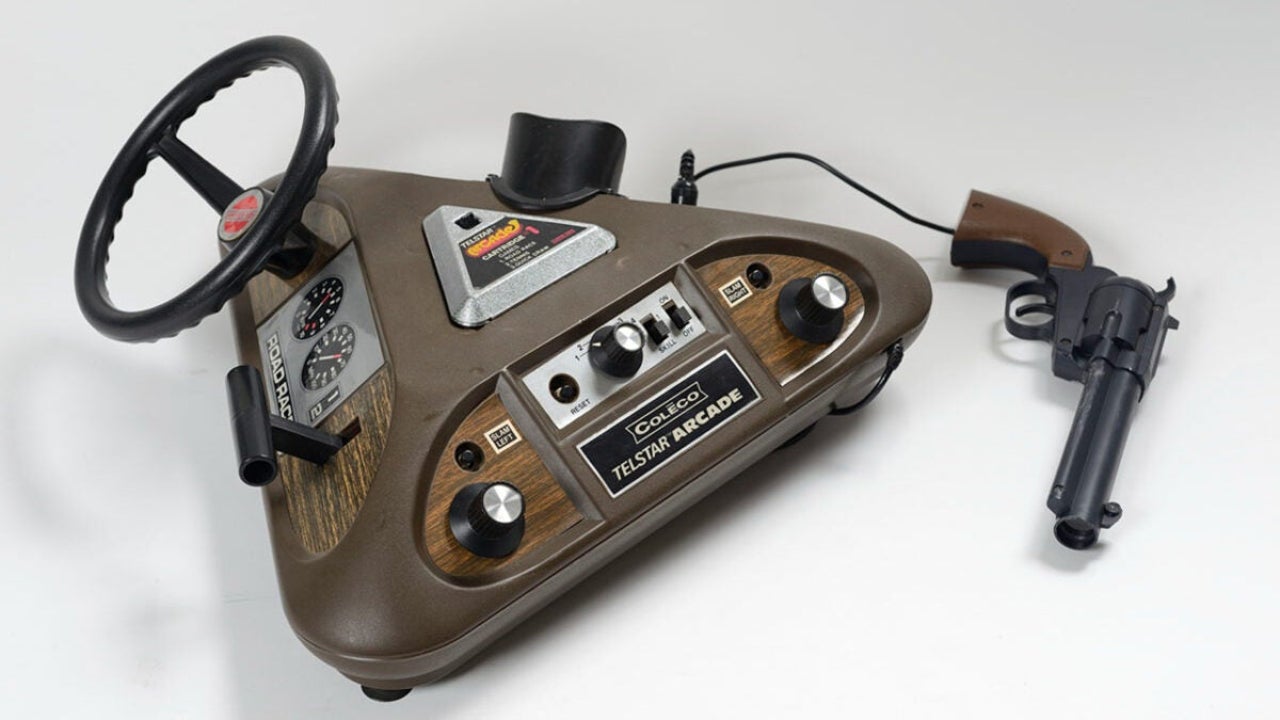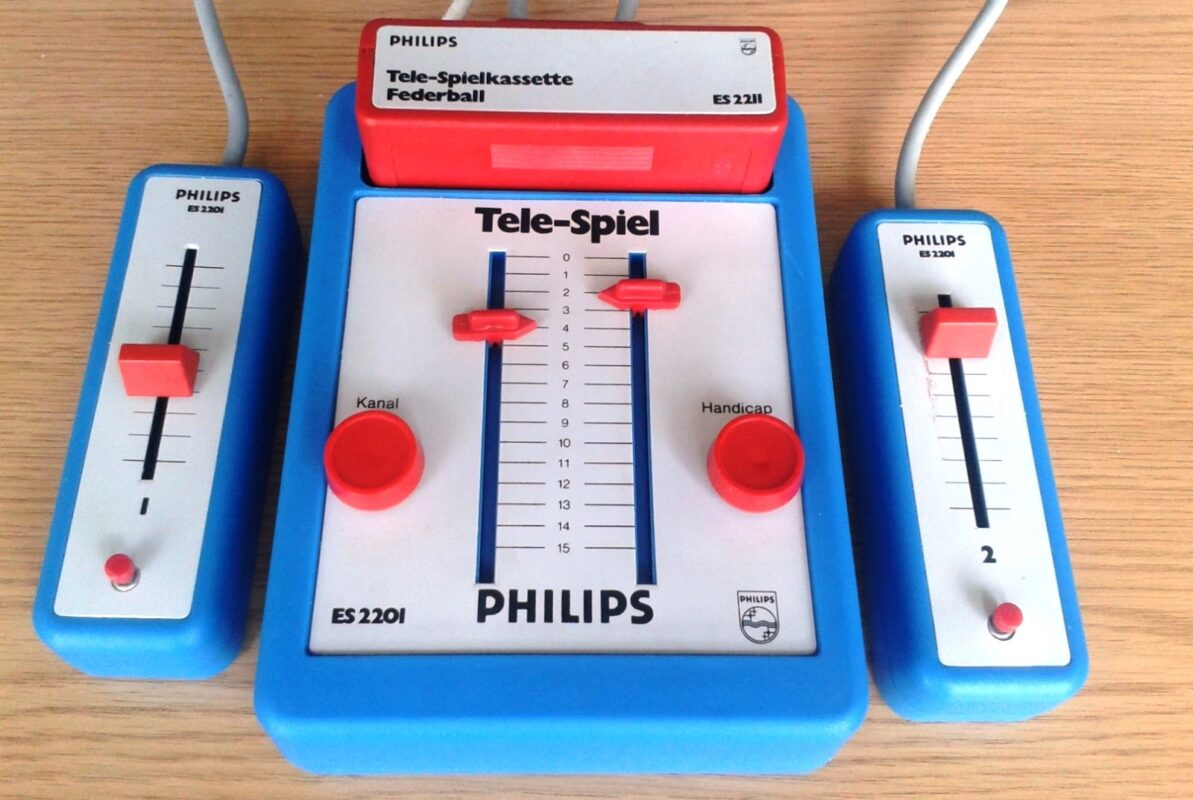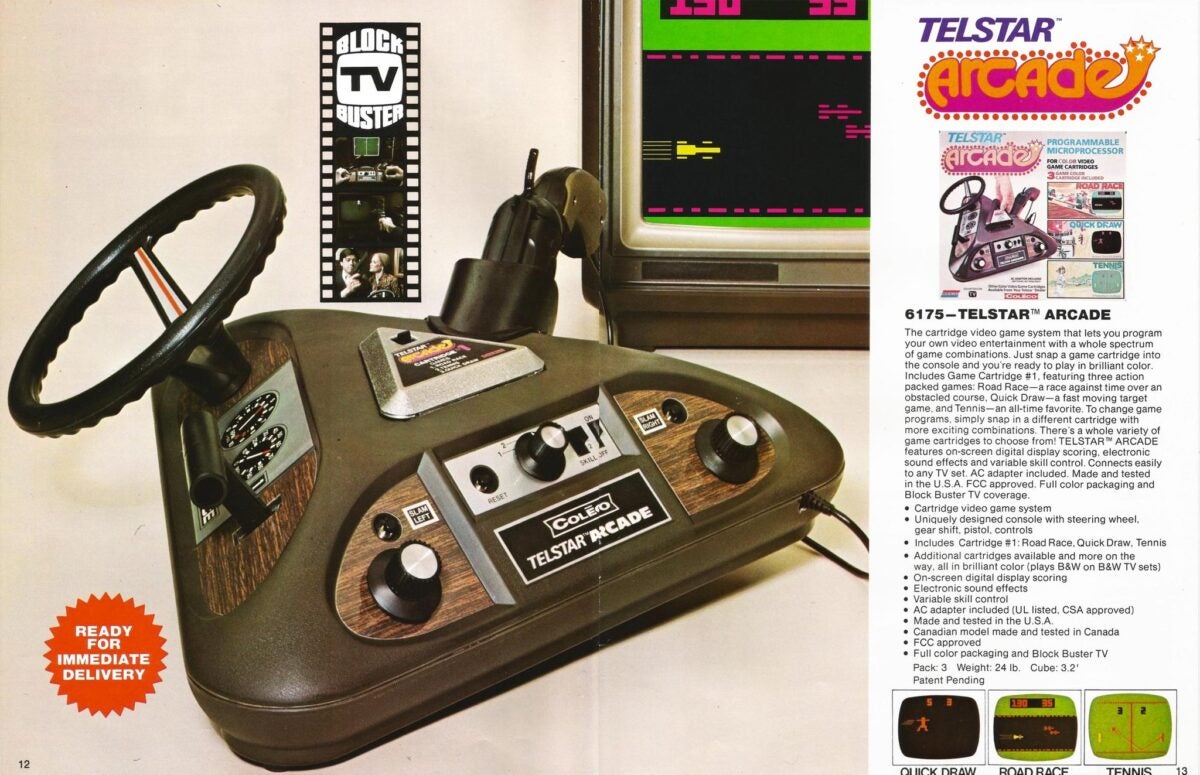When no one knew what the consoles were going to be like, they invented a triangular genius
Gun, steering wheel, and roulette, three in one

- February 11, 2025
- Updated: February 11, 2025 at 9:14 PM
We may now have a very clear idea of what a video game console is: a machine with (or without) a disc drive that connects to the television and allows playing multiple titles with a single controller, which may come with additional peripherals if necessary. It seems obvious, yes. But 50 years ago, in the prehistory of video games, the companies that ventured into this field had no idea what the public wanted. However, there is one console in particular that went all out. Perhaps, in retrospect, too much.
The beginnings of gamers
Magnavox kicked off with its Odyssey in 1972, displaying three moving squares and a line on the screen, in black and white. In fact, anything external (like money, dice, or boards) had to be used off-screen when the game indicated it. There was no audio or way to keep score, but the machine itself looked a lot like what we have today: a giant plastic rectangle where games could be swapped. Well, it wasn’t like they were swimming in them: there were a total of 11 cartridges that included 28 very similar games (like Hockey, Tennis, or Baseball).
The Odyssey sold less than 70,000 units in the United States, but it was enough for others to take the baton. Atari launched a home version of its Pong, Epoch did the same with the eye-catching TV Tennis Electrotennis, the first console exclusive to Japan that connected to the television wirelessly, and Philips tried to dominate the market with its Tele-Game ES 2201, which allowed for manual scorekeeping using sliders included in the controller. It was a different time.

And so we found ourselves in 1977, a year before Nintendo released its first console (no, not the Famicom, the Color TV-Game 6, the first attempt at color in history). Everyone was putting out rectangular boxes with clones of Pong and zero creativity until Coleco decided it would be the one to set the style for the future with its Coleco Telstar Arcade, a triangular design that had everything you needed to play on each side. And when I say “everything,” I mean everything.
The console, like a Dorito
Coleco had already released 13 different versions of its Coleco Telstar between 1976 and 1977 (so we can complain now about slim versions), each with its small novelty. For example, Colormatic displayed each game in a color, Sportman added a gun, and Combat had two joysticks for each player on either side of the console. All these innovations culminated in Arcade, the definitive Coleco console (at least, for these first two years), where each side offered you a different way to play.

On one side you had a joystick and a gear shift. On another, a gun that could be pulled from its interior. On another, two dials that turned. Just one control? What are we, barbarians? To top it off with originality, the games were also triangular in shape and were inserted at the top of the device. That said, Coleco didn’t exactly go all out in creating hundreds of playable experiences: in total, four cartridges, each with three or four games. And that was it. One racing game, another shooting game, and one “normal” game, with titles as enticing as Naval Battle, Shooting Gallery, Tennis (yes, the Pong again) or Hockey.
Coleco Telstar Arcade was the market’s answer to the question “How can we make this new and fun market seem even more fun?”, and it must be acknowledged that at least they tried. Since we are no longer playing with triangular consoles, we can deduce that it ended up as a mere curiosity in history, but no one can say they didn’t take risks. Indeed, at Coleco, they knew perfectly well what it meant to take a risk.
It should be noted that by the time they launched this series of consoles, the company had been around for more than 45 years, during which they first sold leather goods before switching to plastic toys, a booming business that they set aside to focus entirely on making… ¿¡Snowmobiles!? It’s no surprise, at this point, that they left snowmobiles behind to make consoles. After all, what did it matter? No one knows how many of this console were sold, but since it was released while the industry was preparing to launch the second generation -with Atari 2600 leading the way-, we can assume it had limited success.
In fact, Coleco only had another attempt in the world of consoles with the famous Colecovision before being swallowed by Hasbro in 1989, which destroyed the brand. It’s not like anyone cried over it, really. It’s a nice example of how the craziest creativity doesn’t always translate into guaranteed success. That said, subsequent consoles like Wii would never have existed without the weirdest triangular design in history. Since they didn’t make a dime, at least they had a legacy. Something is something, right?
Editor specializing in pop culture who writes for websites, magazines, books, social networks, scripts, notebooks and napkins if there are no other places to write for you.
Latest from Randy Meeks
- What happened to Bonk, the PC Engine mascot that hasn't appeared in any game for two decades
- Where does all this craze for Pokémon cards come from? Between the game and the most obscene capitalism
- Alfred Hitchcock, the Hays Code and the strange history of toilets in Hollywood
- The Popeye game that created one of the biggest myths in video game history
You may also like

We finally found out why the Thunderbolts movie has an asterisk
Read more

Capcom takes responsibility for what happened on the PSN and extends the open beta of Monster Hunter Wilds
Read more

Capcom presents Monster Hunter Wilds amid controversy over character customization
Read more

This new competitor to The Sims promises us something truly unique: to play as ghosts
Read more

Civilization 7 continues its initial release disaster with an unpopular patch
Read more

Dragon Quest III HD-2D Remake has been a huge success by Square Enix standards
Read more